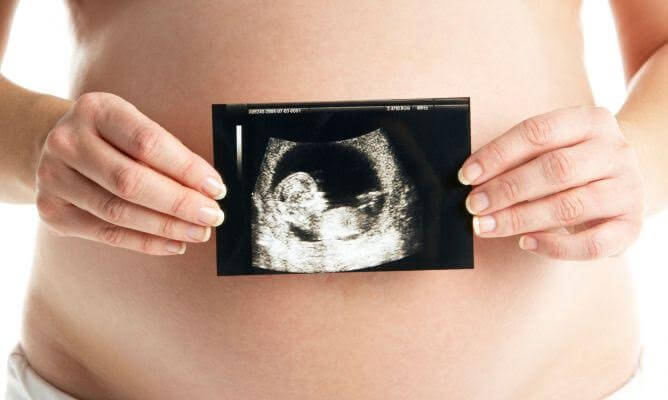Vanishing Twin Syndrome

There are particular disorders associated with twin pregnancies, such as vanishing twin syndrome. This disorder was first discovered in 1945. In many cases of double or multiple pregnancies, some of the fetuses disappear without us noticing immediately.
We have often heard of cases where two or more babies are identified early in pregnancy. But after a while, one of the identified fetuses is no longer there.
Also known as the “escaping twin,” the fetal tissue fades without apparent consequence. According to experts, it looks as though the fetus has disappeared, but in fact it has been lost in an involuntary abortion.
How Is Vanishing Twin Syndrome Diagnosed?

Before follow-up ultrasounds were commonplace, it was difficult to identify the “escaped twin.” However, ultrasounds are now performed since the very beginning of pregnancy.
Twin or multiple fetuses are detected in the first trimester. Therefore, the follow-up ultrasounds will show if there is a change. For example, the sound of an extra heartbeat may no longer be perceived.
Previously, the disappearance of one of the fetuses was only detected after birth. The placenta would then be analyzed, and it was understood that one of the fetuses had died. Today, an accurate diagnosis can be obtained in the first seven weeks.
When the mother returns for her prenatal appointment after learning that she is pregnant with twins, she may find that one is missing. Although surprising, in many cases the mother may already have had symptoms of a miscarriage. In this situation, the ultrasound reveals that one of the twins has survived.
Vanishing twin syndrome has an incidence of up to 30% in multi-fetal pregnancies. It has been found to occur more frequently in mothers over the age of 30. This estimate corresponds to the given diagnoses, since ultrasound is used in the early stages of pregnancy.
Why does this twin syndrome occur?

The exact causes of vanishing twin syndrome are unknown. However, there is sufficient evidence that the twin that vanishes may have suffered from genetic disorders since it was an embryo. This assumption is derived from the analysis of the placenta after delivery.
In that sense, it is not something that happens suddenly, since the vanished twin presents anomalies early on. Often the fetal tissue shows chromosomal abnormalities, whereas the surviving fetus does not. Another possible cause may be an improper implant.
Possible consequences for the survivors
Survivors are understood to mean the surviving fetus(es) that continue to develop, as well as the mother. Depending on the stage in which the loss occurs, different outcomes are possible.
For example, if the disappearance happens in the first trimester, there are usually no symptoms or serious consequences. However, everything depends on what caused the other twin to vanish.
If the loss occurs in the second or third trimester, there may be increased risks for the surviving baby, including possible cerebral palsy.
In the event the fetus dies in the embryonic period, the placenta, fluid and all fetal tissue are reabsorbed. In most cases, this is what happens, because the surviving twin puts pressure on the tissue, completely flattening it.
Based on the flattening that occurs, two types can be identified at birth:
- Fetus compressus: when an easily identifiable flat fetus is found.
- Fetus papyraceous: the absorption and/or disappearance is only noticed via analysis of the placenta or by the loss of fluids.
Twin syndrome can be identified by the appearance of symptoms like bleeding, pelvic pain or uterine cramps during the first trimester. Going to the doctor as soon as possible is recommended if you have any of these signs. Usually, neither the mother nor the other twin requires treatment.
However, when the disappearance occurs during the second or third trimester, the pregnancy may be considered high-risk. An ultrasound will reveal if the pregnancy is viable. Otherwise, an induced abortion may be warranted, or an involuntary abortion can be expected.
All cited sources were thoroughly reviewed by our team to ensure their quality, reliability, currency, and validity. The bibliography of this article was considered reliable and of academic or scientific accuracy.
- Jaime, A. L. A., & Torres, J. L. T. (2016). Síndrome del gemelo evanescente. Revista Internacional de Salud Materno Fetal, 1(1), 19-20. http://ojs.revistamaternofetal.com/index.php/RISMF/article/view/8
- Estela, D. E. V., & Maturrano, F. H. L. (2013). Feto evanescente, feto compreso, feto papiráceo. Interciencia, 4(3), 121-125. https://www.clinicainternacional.com.pe/pdf/revista-interciencia/11/caso_clinico_feto.pdf